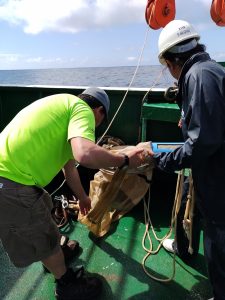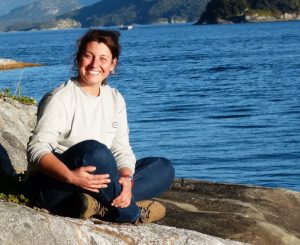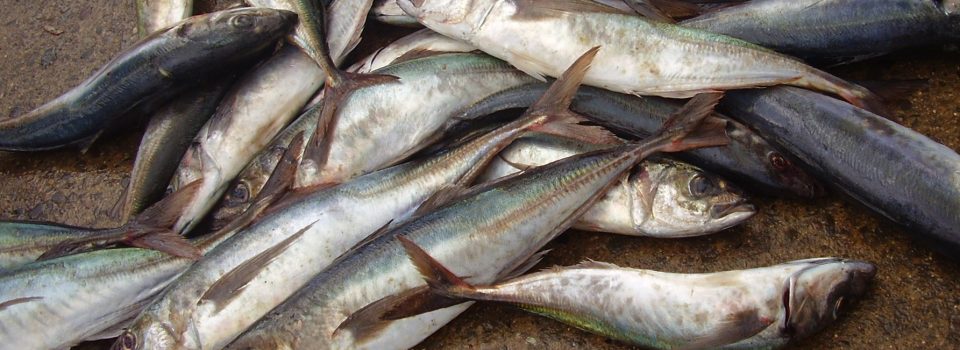Increasing horse mackerel information
December 25th, 2020 The “High seas’s horse mackerel biological condition” project began in 1998 with a methodological cruise that defined area, research period and design. From then until 2020 -although with some interruptions- the species has been studied from south-central Chile coast up to 1000 nm using industrial fleet vessels that operates in horse mackerel fishery. The main objective is to estimate relative abundance indexes of horse mackerel eggs and larvae and to characterize the resource aggregations during maximum reproductive activity period.
The “High seas’s horse mackerel biological condition” project began in 1998 with a methodological cruise that defined area, research period and design. From then until 2020 -although with some interruptions- the species has been studied from south-central Chile coast up to 1000 nm using industrial fleet vessels that operates in horse mackerel fishery. The main objective is to estimate relative abundance indexes of horse mackerel eggs and larvae and to characterize the resource aggregations during maximum reproductive activity period.
Project manager Carolina Lang stated: “This project represents three institutions IFOP-INPESCA-UNAB collaborative work . In addition, the use of fishing vessels as scientific platforms implies other challenges, such as acoustic equipment calibration and sampling protocols implementation, so collected information is comparable to any other research. In this sense, the industry willingness and captains is valuable and key on activities development on board, which in turn promotes stakeholders participation in its management process.
This project main results are currently used by ORP-PS (South Pacific Regional Fisheries Organization) to guide decision-making and stock assessment. But also, detailed information on reproductive, environmental and trophic condition has allowed us, on the one hand, to expand our knowledge about the species, which is a source of publications and information for other studies, and on the other hand to detect eggs,distribution changes. reproduction and spawning habitat, leading to new questions and the need to integrate new research to elucidate factors that affect these changes.
This year 2020, we were able to use a predictive model that considers environmental conditions to determine the probability of horse mackerel eggs in the oceanic region, this effort seeks to efficiently distribute available resources, fishing vessels, and be more successful in meeting eggs. We will evaluate the success of this tool when we have results on the distribution of eggs and if it is effective, the model could be transferable to other species and spawning biomass evaluation studies ”.
According to Aquiles Sepúlveda INPESCA director, “today we are working on collected information processing and analysis, which will undoubtedly be important to meet the research’s setted objectives, and also an input for future fishery development. Our country maintains a robust research on horse mackerel and this study is another step in that direction ”.
Sebastian Klarian from UNAB adds: “This project provides the opportunity for joint research. On board, cooperation between institutions is mutual in samples taking, as well as in results discussion. Our role in the project is to investigate trophic dynamics and infer horse mackerel movement patterns. For this we use horse mackerel’s eye lens and combine stable isotope technique to know its life history. These results will have an impact on subsequent decision-making and progress towards ecosystem management ”.
What is the future vision of the project?
 Carolina Lang added, “Chile and the world are experiencing changes and among them, resources availability and oceans health, which are also a matter of global concern. They are all related and difficult to address because there is a limited budget and multiple needs. But understanding the changes in the oceans is the first step in developing measures that allow better management and our seas continue to provide food security and well-being, today and in the future.
Carolina Lang added, “Chile and the world are experiencing changes and among them, resources availability and oceans health, which are also a matter of global concern. They are all related and difficult to address because there is a limited budget and multiple needs. But understanding the changes in the oceans is the first step in developing measures that allow better management and our seas continue to provide food security and well-being, today and in the future.
By gathering research studies information, researchers can learn more about species behavior and their response to environmental changes. But also, it better prepares us to share this knowledge with users. Therefore, collaboration helps to build a bridge between science and industry. In this project, the use of fishing vessels as scientific platforms is key to collecting information that supports evidence-based decision making ”.
